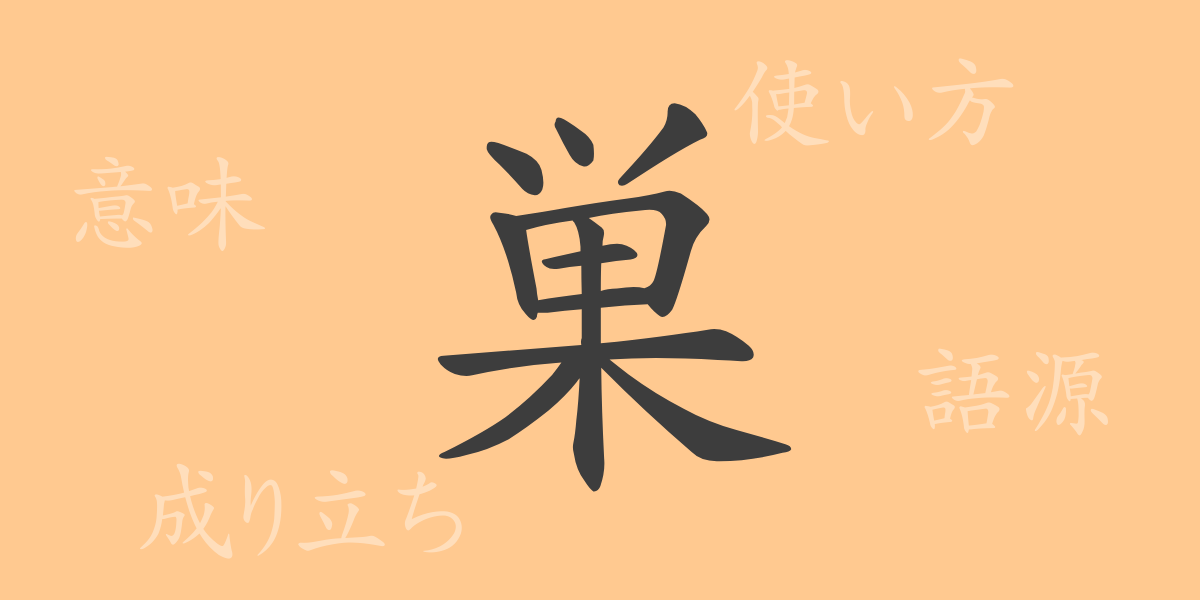The character for ‘nest’ (巣 – そう, sou) is not just a structure; it symbolizes life being nurtured, offering safety and protection. Each Kanji character, such as ‘巣’, is deeply embedded with history and culture, reflecting the intricate nature of the Japanese language. This article delves into the Kanji ‘巣’, exploring its origins, meanings, usage, and how it extends into idioms and proverbs, enriching its narrative.
Origins of 巣 (そう – Sou)
The Kanji ‘巣’ originated from ancient China, designed to mimic a bird assembling branches to form a nest. This character evolved over time to its current form, initially representing a bird’s nest but later expanding to denote various creatures’ dwellings or temporary shelters for people.
Meaning and Usage of 巣 (そう – Sou)
‘巣’ specifically refers to a living or protective space created by organisms. It encompasses not only bird nests but also the burrows of insects and animals. Metaphorically, it also describes a home or a refuge for humans and can signify a gathering place or hub for specific groups.
Reading, Stroke Count, and Radical of 巣 (そう – Sou)
The Kanji ‘巣’ has several readings and is integral to understanding its structure and significance in Japanese.
- Reading: On’yomi ‘ソウ’ (Sou), Kun’yomi ‘す’ (su)
- Stroke count: The character ‘巣’ comprises 11 strokes.
- Radical: The radical of ‘巣’ is 糸部 (いとへん – itohen), associated with ‘thread’.
Phrases and Proverbs Using 巣 (そう – Sou)
‘巣’ appears in many idioms and proverbs, each reflecting aspects of Japanese culture and language:
- 巣立つ (すだつ – Sudatsu): Refers to children growing up and leaving their parents’ home.
- 巣穴 (すあな – Suana): Denotes an animal’s burrow or hideout.
- The proverb ‘巣から落ちた雛’ (すからおちたひな – Su kara ochita hina) symbolizes someone young struggling to be independent after leaving their parental support.
Conclusion on 巣 (そう – Sou)
This article has explored the diverse meanings and applications of the Kanji ‘巣’. From biological habitats to human living spaces and metaphorical uses, ‘巣’ plays a significant role in the Japanese language. Learning about the history and cultural depth embedded in each Kanji helps us understand the lifestyles and sentiments of the people through their words.

























